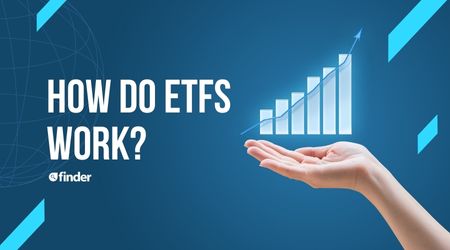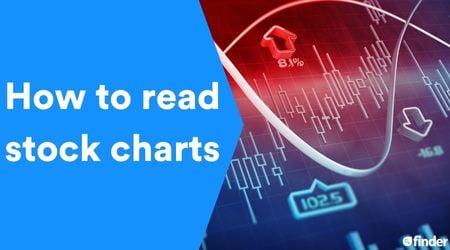An exchange-traded fund (ETF) is a basket of funds and an investment product that helps investors decrease costs while amplifying the diversification of holdings. Like the stock market, an investor can choose to go long with ETF investments — buy and hold while waiting for the value of the pooled funds to increase — or short the market using ETFs.
For instance, if an investor believes the S&P 500 will drop during the next month, they could invest in an inverse ETF that would rise in value should the S&P 500 go down.
This makes inverse ETFs ideal for investors who want to profit during market downturns. However, to maximize investment returns, you must first appreciate how an inverse ETF in Canada works before learning the best strategies and tactics for shorting the market using ETFs.
What is an inverse ETF in Canada?
Inverse ETFs are exchange-traded funds (ETFs) built with derivatives such as futures contracts. These ETFs aim to generate a daily performance that moves in the opposite direction of a particular index, for example, the S&P 500. You can buy and sell shares in an inverse ETF through a brokerage account using the same process as buying a traditional ETF.
There are two main types of inverse ETFs in Canada:
- One-to-one ETFs. These inverse ETFs are designed to move in the opposite direction of a particular index daily. So if the S&P 500 goes down 3% today, an inverse ETF betting against it would go up 3%.
- Leveraged ETFs. These inverse ETFs are designed to produce daily returns that multiply the performance of a given index in the opposite direction. Leveraged ETFs typically have a multiplying factor such as three times (3X) in their names. If the S&P 500 goes down 3%, a leveraged 3X ETF betting against it would go up 9% (3 x 3).
Inverse ETFs are also called short ETFs or bear ETFs.
Why invest in inverse ETFs?
Why buy an inverse ETF? There are several reasons why you should consider investing in inverse ETFs.
Profit in a falling market
The key benefit of inverse ETFs is that they allow you to make money when the market goes down. This makes them a useful hedge against market downturns, allowing you to counteract your losses from other investments when stock prices fall.
Easier than shorting
Inverse ETFs allow you to bet against the market like you would when short-selling stocks. But unlike with shorting a stock, you don’t need to borrow any shares.
Shorting stocks is an advanced and risky trading strategy that involves borrowing shares from a broker and selling the stocks immediately. The rationale here is that if the stock price falls sharply as you predict, you can buy them back at much cheaper prices and return them to your broker while keeping the difference.
But when you invest in an inverse ETF, you invest with your own money.
Can be held in registered accounts
Inverse ETFs can also be held in registered accounts, such as a TFSA or RRSP. This allows you to make the most of tax advantages that apply to your investment income.
There are inverse ETFs for a wide range of assets and markets
You can invest in inverse ETFs across an extensive range of assets and market sectors, not just the S&P 500. It’s easy to access inverse ETFs for a host of major stock market indices as well as bonds, commodities and cryptocurrencies.
Risks of inverse ETFs
While they have their advantages, there are also several risks you should consider before investing in inverse ETFs.
The market could move against you
There’s no guarantee that the market will move the way you predict. So if you invest in an S&P 500 inverse ETF and the S&P 500 goes up, you’ll suffer a loss.
They’re only designed for short-term use
Inverse ETFs are rebalanced daily. This means they’re designed for short-term use only, and holding an inverse ETF for longer than one day could cause you to suffer a loss. As a result, they’re better suited to active and experienced traders, and they usually aren’t suitable for casual investors who take a long-term, hands-off approach to investing.
Brokerage fees
Inverse ETFs are designed to be bought and sold much more often than regular ETFs. You’ll need to pay brokerage fees when you place a buy or sell order, so make sure you factor this additional cost into your calculations.
High management fees
Inverse ETFs have higher management fees than regular ETFs because they’re actively managed and rebalanced daily. For example, while some index ETFs track Canadian stocks and have management expense ratios of less than 0.1%, it’s common for inverse ETFs to have management fees of 1% or more.
Leveraged inverse ETFs can amplify your losses
Your losses can be even greater if you invest in leveraged ETFs because these are designed to magnify the daily performance of a given index. That means investors can expect higher rewards but also bigger losses.
How to choose the best inverse ETFs in Canada
Consider the following factors when comparing inverse ETFs:
- Underlying index or asset. Look for an ETF that offers exposure to the index or asset class you want to trade. You should have a strong knowledge of a particular index or asset and the time to analyze it daily before investing in a bear ETF that aims to profit from its decline.
- Fees. Expect management expense ratios of 1% or more. Compare fees across funds to find the best value.
- Leverage. Work out how much risk you’re willing to accept and whether you want a 1:1 inverse ETF or a leveraged inverse ETF. Double and triple inverse ETFs are available, providing the potential for greater returns but also greater losses.
- Past performance. Check back on the fund’s past performance. Has it consistently performed in line with its stated objective?
- Trading volume and assets. Take a look at the daily trading volume of the inverse ETF to work out how quickly and easily you’ll be able to sell it when needed. Also, check the ETF’s assets under management to find out if it’s a popular choice with other investors.
- Don’t buy and hold. Inverse ETFs are for short-term intraday trading, not for long-term buy-and-hold investing. Make sure you monitor market movements carefully and have a clear exit strategy.
Compare trading platforms
Finder Score for stock trading platforms
To make comparing even easier we came up with the Finder Score. Trading costs, account fees and features across 10+ stock trading platforms and apps are all weighted and scaled to produce a score out of 10. The higher the score the better the platform - simple.
10 inverse ETFs in Canada investors should consider
To invest using inverse ETFs you must first have a discount brokerage account. Then, it’s time to consider the options. To get started here are 10 of the best-known inverse ETFs in Canada.
ProShares UltraPro Short QQQ
- Ticker: SQQQ
- YTD return: -28.39%
- Assets under management: $1.84 Billion
- Expense ratio: 0.95%
This ETF is designed to move in the opposite direction of the Nasdaq-100 Index. It offers 3X daily short leverage on nonfinancial equities like US Treasury Bills, so this ETF is best for investors with a high risk tolerance who aren’t looking to hold onto stocks for the long run.
Buy on Interactive BrokersProShares Short S&P 500
- Ticker: SH
- 1-year return: -12.85%
- Assets under management: $1.40 Billion
- Expense ratio: 0.90%
Designed to perform in the opposite direction of the S&P 500, this ETF can be useful during bear markets. Results are delivered over a single trading session, with exposure resetting every month. The ProShares Short S&P500 might be suitable for investors who want to bet against large-cap US equities and who don’t plan to hold their stocks in the long run.Buy on Interactive Brokers
ProShares Short QQQ
- Ticker: PSQ
- 1-year return: -8.95%
- Assets under management: $592.62 Million
- Expense ratio: 0.95%
This ETF tracks the 100 largest nonfinancial securities on the Nasdaq. Results are delivered over a single trading session, with exposure resetting every month. The PSQ may be suitable for short-term investors who want to hedge against their Nasdaq investments or bet against top Nasdaq nonfinancial stocks.Buy on Interactive Brokers
ProShares UltraShort S&P 500
- Ticker: SDS
- 1-year return: -24.46%
- Assets under management: $587.52 Million
- Expense ratio: 0.91%
This ETF is designed to move in the opposite direction of the S&P 500 Index. It offers 2X daily short leverage on large-cap US equities like US Treasury Bills. Leverage resets every day. This ETF is best for investors with a high risk tolerance who aren’t looking to hold onto stocks for the long run.Buy on Interactive Brokers
ProShares UltraPro Short S&P 500
- Ticker: SPXU
- 1-year return: -35.14%
- Assets under management: $468.58 Million
- Expense ratio: 0.93%
This ETF is designed to move in the opposite direction of the S&P 500 Index. It offers 3X daily short leverage on large-cap equities. Leverage resets every day. This ETF is best for investors with a high risk tolerance who aren’t looking to hold onto stocks for the long run.Buy on Interactive Brokers
Direxion Daily S&P 500 Bear 3X Shares
- Ticker: SPXS
- 1-year return: -35.06%
- Assets under management: $388.06 Million
- Expense ratio: 1.07%
This ETF is designed to generate performance opposite to the S&P 500, which contains some of the biggest blue-chip companies in America. Investors could use this ETF to hedge against existing S&P 500 investments or bet against large-cap, blue-chip companies in the US.Buy on Interactive Brokers
ProShares UltraPro Short Dow 30
- Ticker: SDOW
- 1-year return: -36.43%
- Assets under management: $356.66 Million
- Expense ratio: 0.95%
This ETF is designed to move in the opposite direction of the Dow Jones Industrial Average. It offers 3X daily short leverage on large-cap US equities. Leverage resets every day. This ETF is best for investors with a high risk tolerance who aren’t looking to hold onto stocks for the long run.Buy on Interactive Brokers
Direxion Daily Small Cap Bear 3X Shares
- Ticker: TZA
- 1-year return: -45.49%
- Assets under management: $351.39 Million
- Expense ratio: 1.07%
This ETF is designed to move in the opposite direction of the Russell 2000 Index. It offers 3X daily short leverage on small-cap equities. Leverage resets every day. This ETF is best for investors with a high risk tolerance who aren’t looking to hold onto stocks for the long run.Buy on Interactive Brokers
ProShares Short Russell 2000
- Ticker: RWM
- 1-year return: -16.48%
- Assets under management: $259.35 Million
- Expense ratio: 0.95%
This ETF tracks an index of small-cap US equities that are also tracked by the Russell. Results are delivered over a single trading session, with exposure resetting every month. The RWM may be suitable for short-term investors who want to hedge against existing investments or bet against small-cap US stocks.Buy on Interactive Brokers
ProShares Short Dow 30
- Ticker: DOG
- 1-year return: -13.60%
- Assets under management: $232.26 Million
- Expense ratio: 0.95%
This ETF aims to move in the opposite direction of an index that invests in American blue chip companies, particularly the Dow Jones Industrial Average. So it may produce strong returns when major American companies in that index experience losses in share price.
However, the index has in recent times been experiencing an overall gain and recently broke records. So, it may be best to monitor this ETF closely before jumping in.Buy on Interactive Brokers
Bottom line
Inverse ETFs can help you profit when the stock market falls or when a particular sector goes down. But inverse ETF investing is complicated, and the losses can be as big as the potential returns, so it’s not a suitable option for all investors. It’s also not suitable as a long-term strategy.
If you want to invest in inverse ETFs, compare investing platforms before you open an account.
Frequently asked questions
More on investing

What are the best stocks for beginners with little money to invest?
Want to dive into investing but don’t have much to spend? Take a look at these types of stocks.
Read more…
Meme stocks: What they are and examples of popular stocks
Meme stocks can produce large gains in short periods, but the stocks are volatile.
Read more…
How do ETFs work?
Your guide to how ETFs work and whether this type of investment is right for you.
Read more…
How to read stock charts
Learning how to read stock charts and recognize chart patterns can unlock your success as a trader.
Read more…
What are stocks?
Owning a stock means you own part of a company and can potentially grow your wealth. But there is a risk of loss.
Read more…
How to analyze a stock
Learn how to research stocks and find the right investment opportunities in 4 steps.
Read more…More guides on Finder
-
Best paper trading platforms and demo accounts for 2025
How to choose the best paper trading platform to help you learn the ins and outs of investing.
-
Quantum computing stocks
Microsoft, IBM, IONQ, Rigetti and Quantum Computing are some of the top stocks to buy in this category. See how to get started here.
-
How will tariffs affect the stock market?
Find out how the Trump tariffs will impact the stock market and explore Canadian stocks that may be resilient amidst tariffs.
-
Can I buy DeepSeek stock in Canada?
DeepSeek isn’t publicly traded, but you can invest in similar companies or swoop in on stocks impacted by the DeepSeek effect.
-
Trading promos & investment account bonuses for 2025
Enjoy perks like free trades and cash back when you open a stock trading account with these online broker promotions.
-
National Bank Direct Brokerage review
Explore the perks and drawbacks of this commission-free brokerage in our NBDB review.
-
Best renewable energy stocks
These are the best renewable energy stocks to buy now in Canada.
-
Best stocks to buy right now in Canada
Finder’s unique algorithm found the 20 best TSX stocks to buy right now.
-
Robinhood alternatives in Canada
Your guide to six Robinhood Canada alternatives for trading stocks, ETFs and more.
-
How to invest in the S&P 500 in Canada
Find out how to invest in the S&P 500 in Canada—one of the world’s most popular stock indices—to diversify your portfolio.

